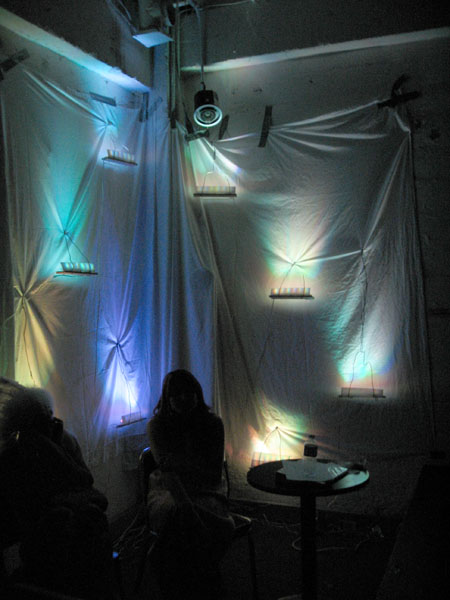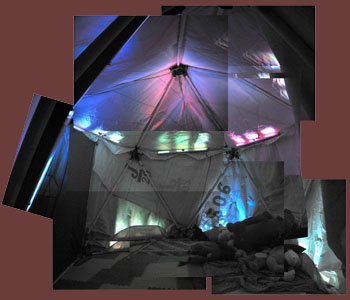
Haunted Garden is a room that listens to you, figures out the notes in your voice, and uses them to compose music. It's an immersive sound and light space that depends on the people inside to create an ambient soundscape & lightscape.
As you enter the space, you notice nothing. Nothing out of the ordinary. It's an art space. Exhibits, pieces on the wall, sculptures. Or maybe just a garden. You resume your conversation. There? What was that? The room sounds different. Tones come slowly to your attention. Is there a refrigerator in the room? No. Strange harmonies. High plaintive voices. They seem to be responding to you. You test them. They are responding to you. But how? You speak, and notes rise in return. Is the room speaking to you?
Later in the day you enter another room: perhaps your kitchen. There's a hum? Have you heard that sound before? It's the fridge. And the clock: a low whir. You remember that strange room, and you start listening to everything. The rooms in your house become present, at least for awhile.
And then you notice the lights in the room are changing color, subtly, and it seems to have something to do with the sounds. But you can't quite tell how. What's going on?

Haunted Garden is a reactive sound and light sculpture that listens to the sounds in the room in which it is installed, and responds in ways that are directly related, but often difficult to discern. Sonically, it's singing harmony with the room. Chromatically, it's softly coloring the space.
The system analyzes the sounds to detect the pitch, amplitude, and onset of notes within a certain range. Then it creates an ambient soundscape and lightscape algorithmically derived from those notes.
There are several parameters which affect the quality of the soundscape the Haunted Garden produces. It can restrict its detection to notes in a western scale or notes in a particular key. This restriction would place the soundscape in a particular harmonic space, depending on how the set of harmonics relates to the set of accepted notes. Conversely, the system could accept any frequency as a note, and thus create a soundscape that was atonal over time. The note detection thresholds can be raised or lowered, allowing for variance in the sparseness of detected notes. The duration and onset of tones relate to the amplitude of detected note peaks, in ways that can be twiddled through parameter changes. Finally, the tones we're playing can be spatialized and come from different parts of the room
The installation is variable in size and scope. The software, written in Max/MSP, allows for varying number of microphone inputs and speaker outputs. The minimal system uses a computer with one microphone (perhaps the built-in microphone) and two speakers, placing the tones in a stereo space. A larger installation might have several microphones placed throughout the space, and can play tones on up to 9 channels, which can be placed independently in the sonic space using a vector-based amplitude panning system (VBAP).
